


xxxxxThe Cornish inventor Richard Trevithick produced the first steam train to run on rails in 1804 (G3c) but, facing problems over the quality of the track, went to work in Peru. When he returned in 1827 the locomotive had been much improved, and a railway line had already been opened. The pioneer in this development was the Englishman George Stephenson, assisted by his son Robert. Having devised a method to increase the draught through the fire, he produced the locomotive Active (also called Locomotion) in 1825, and later that year the world’s first passenger train service was opened between Stockton and Darlington. It carried 450 passengers at a speed of 15 miles per hour. Following this success he directed the work on a more ambitious project, a 40-
GEORGE STEPHENSON 1781 -
(G3a, G3b, G3c, G4, W4, Va)
Acknowledgements
Stephenson: detail, by the English portrait painter Henry William Pickersgill (1782-
xxxxxAs we have seen, it was in 1804 (G3c) that the Cornish inventor Richard Trevithick, improving upon James Watt’s somewhat cumbersome engine, produced the first steam train to run on rails. It carried ten tons of iron ore and 70 passengers a distance of nine miles. Four years later he took an improved version to London. Named “Catch-
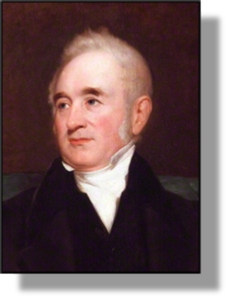 xxxxxStephenson was born in Wylam, near Newcastle-
xxxxxStephenson was born in Wylam, near Newcastle-
xxxxxIn 1813 he visited John Blenkinsop, a mine inspector at Hunslet, Leeds, Yorkshire. As noted earlier, by that year Blenkinsop had invented a “steam boiler on wheels” -
xxxxxIt was on the strength of such progress that in 1821 he went to see the promoter of a proposed scheme to build a railroad from Stockton to Darlington. He intended to employ draft horses to pull the coal wagons along the 26-
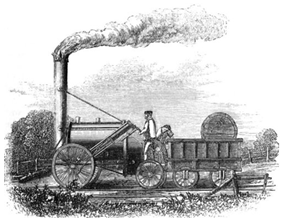
xxxxxNot surprisingly, in 1826 he was appointed engineer of another, more ambitious scheme, the Liverpool and Manchester Railway. A competition was held to find the most efficient locomotive for this new line and it was then that Stephenson, assisted by his son, came up with his famous Rocket (illustrated), an engine which, using his special feature -
xxxxxThe Stockton and Darlington Railway of 1825 had greatly heightened interest in the potential of the steam locomotive as a fast and economical means of transport. The Liverpool-
xxxxxThe building of new and better locomotives and the track upon which they ran -
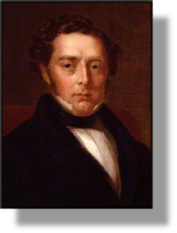 xxxxxInxmuch of his work Stephenson was assisted by his only son Robert Stephenson (1803-
xxxxxInxmuch of his work Stephenson was assisted by his only son Robert Stephenson (1803-
xxxxxIncidentally, when the first engine ran on the Darlington to Stockton line it was preceded for a short while by a man on horseback carrying a flag which read Periculum privatum utilitas publica (The private danger in the public good). Such a warning proved timely. When the Manchester-
xxxxx…… The public interest in the development of the steam engine was immense. In 1829 well over 10,000 people attended the competition held at Rainhill, near Liverpool, to find the most efficient locomotive. And when the Manchester-
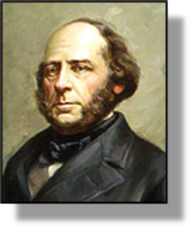
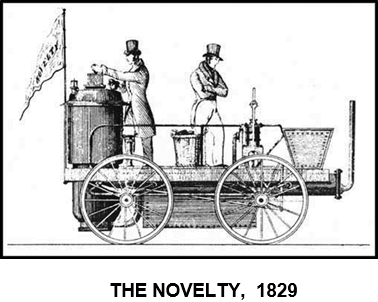 xxxxx…… Inx1829 the Swedish-
xxxxx…… Inx1829 the Swedish-
xxxxx…… Thexfirst railroad in the United States was begun in 1828. This ran from Baltimore to Ohio, and was financed by the American patriot Charles Carroll (1737-
xxxxx…… As noted earlier when studying the English chemist Humphry Davy, Stephenson also made a miner’s lamp in 1815. It proved safer in a draught, but, because of its intricate design, Davy’s model was generally chosen in preference. ……
Including:
The Industrial
Revolution

G4-
xxxxxAs we have seen, in the continuing saga of the Industrial Revolution, Henry Cort’s puddling process in the making of iron, introduced in 1784 (G3b), together with Edmund Cartwright’s wool combing machine and Eli Whitney’s cotton gin, gave fresh impetus to their respective industries. At the same time an improved network of roads and canals, the achievement of men like James Brindley, Thomas Telford and John McAdam, meant that goods and raw materials could be more easily moved about the country. In the 1820s this transport system received an enormous boost with the beginning of the railways, due in large measure to the engineering genius George Stephenson, improving on the work of James Watt and Richard Trevithick. And the building of the locomotives and the rail road itself were made possible by the continuing advances in the iron industry. The Scottish engineers James Neilson and James Nasmyth, for example, invented the hot air blast and the steam hammer respectively, and, as we shall see, in 1856 (Va) the Bessemer process mass produced steel more efficiently and cheaply. In the meantime, however, the mass migration of people from country to towns caused many social problems, and a cry for political reform. The next decade was to see the Reform Act of 1832, the Poor Law of 1834 and a struggle for workers’ rights, exemplified by the Tolpuddle Martyrs of 1834 and the Chartist movement of 1838. By this time the Industrial Revolution was spreading over Europe and the United States, and was to reach Japan soon after the turn of the century.
xxxxxAs we have seen, following a series of mechanical inventions, made to increase the production of cotton and wool, the Industrial Revolution began in earnest in 1771 (G3a) when Richard Arkwright opened the first factory worked by water power. Just over ten years later the Scottish engineer James Watt invented his rotary engine, and factories began to move to coalfields for their new source of power. Then came Henry Cort’s puddling process in the making of iron in 1784 (G3b), followed by Edmund Cartwright’s wool combing machine, and Eli Whitney’s cotton gin, each giving fresh impetus to their respective industries. At the same time, the need arose for an improved network of roads, and the extension of the canal system. Two Scottish engineers, Thomas Telford and John McAdam, played a major part in extending and improving the roads, whilst new canals were dug to move the heavy raw materials about the country, the leaders here being James Brindley and Telford again.
xxxxxBut these relentless moves towards industrialisation came at a cost. In England, for example, workers who lost their jobs as a result, were prepared to smash the machinery which deprived them of their livelihood. The Luddites, as some were called, took up arms in 1811, and waged a losing battle over the next five years. And those who moved to seek work in the factories found themselves living in squalid, overcrowded conditions, and exploited by a management bent only on the making of profit. The north of England, as William Blake would have it, was full of “dark, satanic mills”. There were men like the mill owner Robert Owen who set up schemes to benefit their workers and refused to employ child labour, but they were few and far between. The direct result, as we shall see, was the Poor Law of 1834, an overdue attempt to give some assistance to society’s most deprived people.
xxxxxFurthermore, unfamiliar working conditions in the factory system brought about a new relationship between the employer and his employees, now beginning to form associations or unions of like workers to make their voices heard. Attempts to form such a union led to the famous case of the Tolpuddle Martyrs in 1834 (W4), a test case of sorts in the struggle for workers’ rights. In the meantime the mass movement of people from countryside to town made a mockery of Parliamentary representation. Demands for a thorough overhaul of the distribution of constituencies, and the laws governing the right to vote, led to the Reform Act of 1832 (W4), a series of measures which abolished pocket and rotten boroughs and went some way to meeting these demands. The struggle was continued in 1838 (Va) with the founding of Chartism, a working-
xxxxxIncidentally, the extent to which parliamentary representation in England had become out of date by the early 1830s can be gauged by the fact that the industrial centres of Birmingham and Manchester had no representation whilst the rural county of Cornwall had 44 members! ……
xxxxx…… And not all were taken by the march of progress. The Duke of Wellington considered that the Rocket -
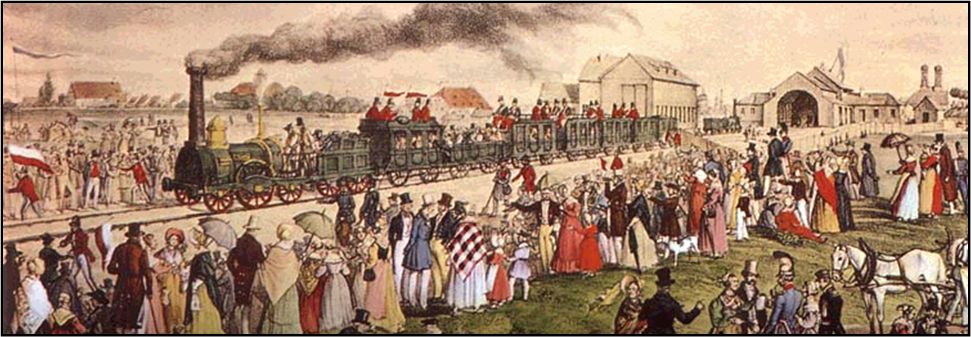
xxxxxIn the 1820s the movement of people and the transport of goods, raw and finished, received an enormous boost with the beginning of the railways. As we have seen, this was due in large measure to the engineering genius George Stephenson, who improved upon the work of James Watt and Richard Trevithick. Andxworthy of mention in this connection was the work of the Welsh inventor Richard Roberts (1789-
xxxxxAnd this development was made possible by continuing advances in the iron industry. Inx1828, for example, the Scottish engineer James Beaumont Neilson (1792-



